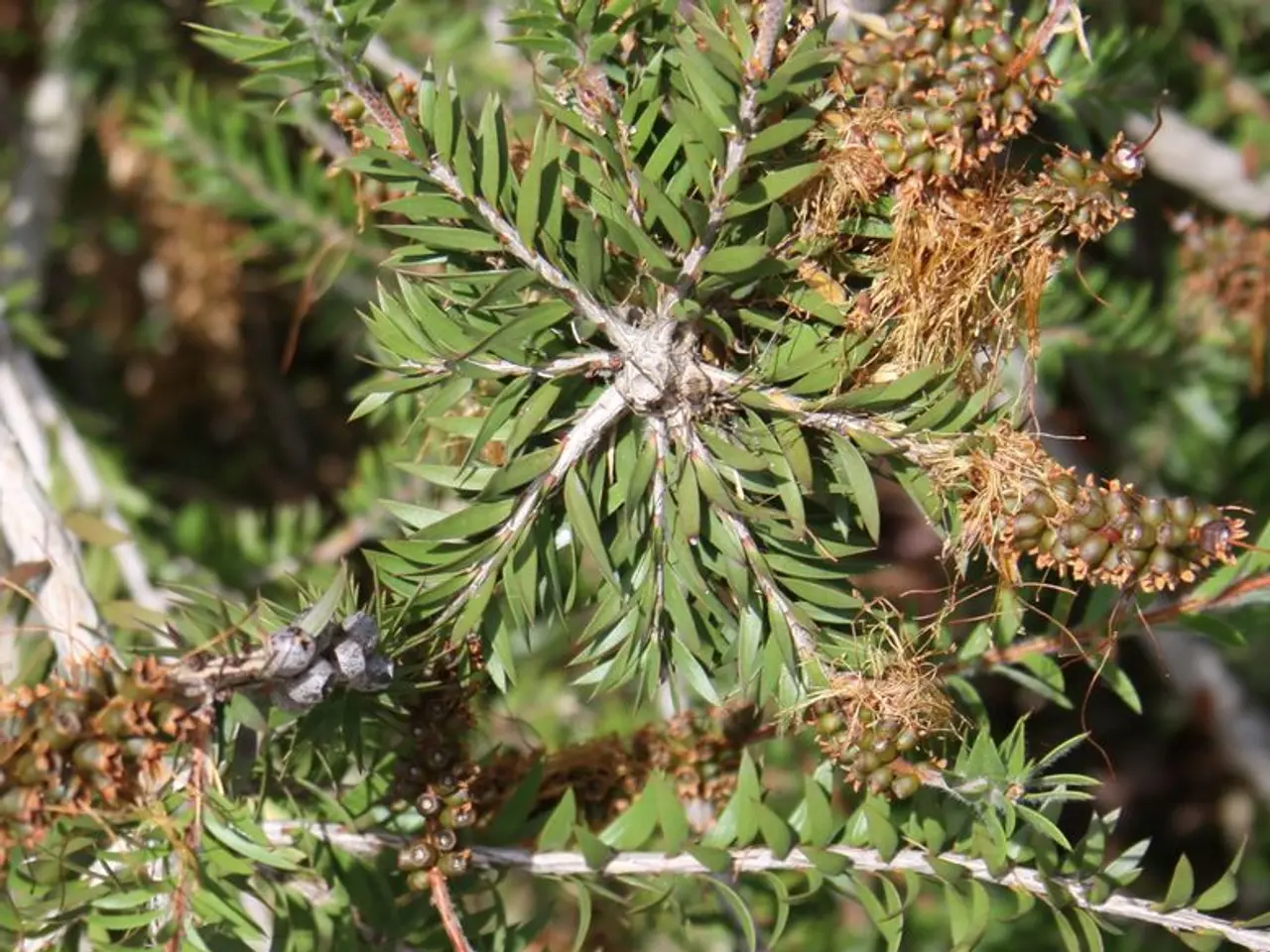Optimal Approaches for Citrus Tree Fertilization: A Comprehensive Guide
Citrus trees, known as heavy feeders, require a balanced diet of nutrients to thrive and produce a bountiful harvest. Here's a comprehensive guide to fertilizing these delightful fruit-bearing plants.
First and foremost, it's essential to use a fertilizer that contains the three primary macronutrients—nitrogen (N), phosphorus (P), and potassium (K)—as well as necessary micronutrients such as magnesium, iron, zinc, and boron. Common N-P-K ratios for citrus include 7-3-3, 10-10-10, 12-6-6, 15-5-10, or a 2-1-1 or 1-1-1 ratio, depending on the specific soil nutrient levels and tree needs.
When it comes to the quantity of fertilizer, the application should be tailored to the tree's age and size, following label directions or soil test recommendations. Organic fertilizers like the E.B. Stone Organics Citrus & Fruit Tree Food (7-3-3 NPK) are typically applied every 6 to 8 weeks during the growing season.
The timing of fertilization depends on the species of fruit and the age of the tree. Generally, citrus trees benefit from three different feedings throughout the growing season. The first feeding is given at early bud break in January or February, the second at fruit swell (a few months later), and the final feeding for oranges, tangerines, and grapefruit is given in May or June. For lemons and limes, the final fertilizer is given in August or September instead.
For potted citrus trees, use a slow-release fertilizer like a 12-6-6 or a 12-4-6, making several applications during the growing season. Established citrus trees should have the fertilizer spread on the soil twice the diameter of the canopy.
It's crucial to avoid fertilizing during the tree's dormant period in fall and winter to prevent stress. In hot climates, it's recommended to skip fertilizing in the hottest months such as June and July. If soil tests indicate particular micronutrient deficiencies, apply amendments such as boron (e.g., Borax diluted in water) in early spring or fall.
To ensure an appropriate balance of nutrients, use a fertilizer specifically formulated for citrus. Both synthetic (quick-acting) and organic (slow-release, soil health-promoting) fertilizers are viable options; organic choices reduce the risk of overfeeding and support soil biology. Avoid fertilizers with excessive nitrogen alone, as this can stimulate too much leafy growth and reduce fruit set.
Regular soil tests are recommended to tailor fertilizer choice and amounts properly. After repotting indoor citrus trees, wait 3-4 weeks before fertilizing to allow acclimation. Even light exposure by rotating trees can help optimize nutrient use and growth. Follow manufacturer instructions carefully to avoid over-fertilization, which can harm roots and plant health.
In summary, apply a balanced citrus fertilizer with a moderate N-P-K ratio and micronutrients every 2-4 weeks (or monthly for mature trees) during the growing season from early spring through fall, reducing or stopping fertilization during winter dormancy or extreme heat. By following these guidelines, you'll help ensure your citrus trees flourish and produce a bounty of delicious fruit.
Maintaining a healthy lifestyle for your citrus tree includes providing it with the right nutrients at home-and-garden. Fertilizing your citrus tree with a balanced fertilizer, containing macronutrients like nitrogen, phosphorus, and potassium, as well as micronutrients such as magnesium, iron, zinc, and boron, is essential for a bountiful harvest.




